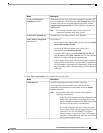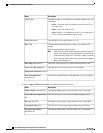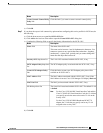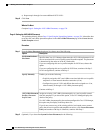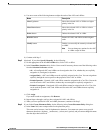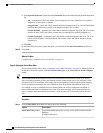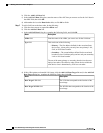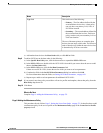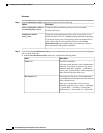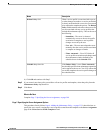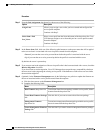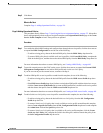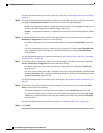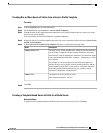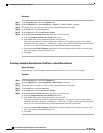
DescriptionName
This can be one of the following:
• Primary—The first address defined for the
associated boot device class. A boot policy
can only have one primary LAN, SAN, or
iSCSI boot location.
• Secondary—The second address defined for
the associated boot device class. Each boot
policy can have only one secondary LAN or
SAN boot location.
The use of the terms primary or secondary boot
devices does not imply a boot order. The effective
order of boot devices within the same device class
is determined by PCIe bus scan order.
Type field
e) Add another boot device to the Boot Order table, or click OK to finish.
Step 8
To add an iSCSI boot to the boot order, do the following:
a) In the Specific Boot Policy area, click the down arrows to expand the iSCSI vNICs area.
b) In the iSCSI vNICs area, double-click the iSCSI vNICs from which you want to boot the server to add
them to the Boot Order table.
c) In the iSCSI vNICs area, click the Set Boot Parameters link.
If there are two iSCSI vNICs, choose the one for which you want to set boot parameters.
d) Complete the fields in the Set iSCSI Boot Parameters dialog box and then click OK.
For more information about the fields, see Setting iSCSI Boot Parameters, on page 454.
e) Repeat steps c and d to set boot parameters for additional iSCSI vNICs.
Step 9
If you created a new boot policy accessible to all service profiles and template, choose that policy from the
Boot Policy drop-down list.
Step 10
Click Next.
What to Do Next
Complete Page 6: Adding the Maintenance Policy, on page 535.
Page 6: Adding the Maintenance Policy
This procedure directly follows Page 5: Setting the Server Boot Order, on page 532. It describes how to add
a maintenance policy to the service profile on the Maintenance Policy page of the Create Service Profile
(expert) wizard.
Cisco UCS Manager GUI Configuration Guide, Release 2.0
OL-25712-04 535
Working with Service Profile Templates



